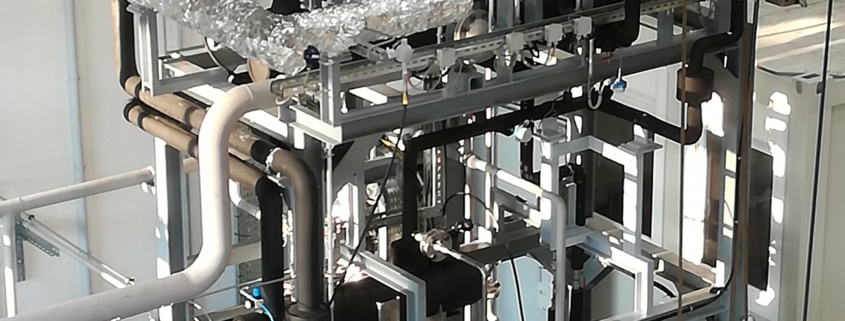Preliminary heat transfer experiments at TU Wien
One of the major goals of the SCARABEUS project is to show the feasibility of the innovative air cooled condenser (ACC) through experiments in Vienna. This heat exchanger is a crucial component in the proposed technology by enabling dry cooling in warm areas where one would typically find Concentrated Solar Power plants.
For down-sizing and thereby reducing the costs, enhanced finned tubes on the inside (CO2 side) will be used. In the course of the design process of Kelvion, experimental measurements at TU Wien are essential to evaluate the heat transfer coefficients on the CO2 side.
To do so, the existing test rig at TU Wien was modified. Originally, in the former project for which the rig was designed and constructed, this was able to perform a full Rankine cycle at a maximum CO2 temperature of 350 °C and a pressure of up to 240 bar. For the heat transfer measurements, maximum temperature and pressure were temporarily reduced, since only the low pressure side is of interest. After the expansion valve, which represents the turbine, two heat exchangers are now located: the precooler and the test tube.
The test tube is a tube-in-tube heat exchanger of 1 m length. Water was chosen as the cooling medium. In a numerical study, Kelvion determined two types of fins considering number, height, thickness and angle of the fins. There will be three test tubes tested at TU Wien in total:
- BARE test tube
- Used as a reference without fins
- COOLING test tube
- Fins designed to enhance the heat transfer when cooling down superheated CO2
- CONDENSING test tube
- Fins designed to enhance the heat transfer when condensing the CO2
The precooler´s purpose is to specifically control the conditions of CO2 at the inlet of the test tube. The test conditions will cover a range of conditions we expect at the ACC in the future which will show dependencies of the heat transfer on:
- 2 pressures
- 3 CO2 mass flows
- 2 CO2 inlet temperatures
- 5 values of inlet vapor content
To show the impact of an additive on the heat transfer, the heat transfer of a blend of CO2 with R1234ze will be examined and compared to pure CO2. Based on the results the ACC will be designed.





